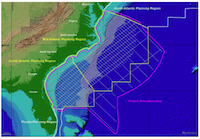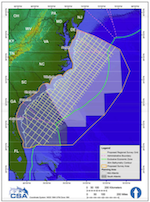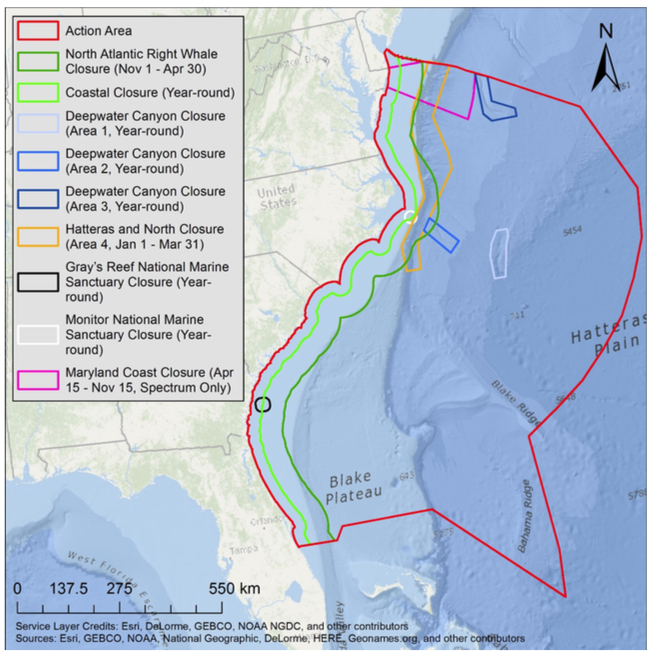NOAA has issued Incidental Harassment Authorizations to five oil and gas exploration companies, each of which plans to engage in several weeks to several months worth of surveys off the US Atlantic coast during the one-year permit period, which extends through 2019. When the Trump administration initially announced its rollback of the Obama-era decision to forego new exploration, it seemed that the lack of Atlantic leasing opportunities in the 2017-2022 National Outer Continental Shelf Oil and Gas Leasing Program would undermine the economic incentives to invest in new surveys (and AEI wrote a detailed “don’t worry too much” post). But the Trump team threw out years of agency staff and scientist work and is now rewriting the OCS leasing program three years early: their new Draft 2019-2024 plan opens up six lease areas in the Atlantic in 2020, 2022, and 2024; new surveys will guide both the government and oil companies as they identify which areas are ripe for development.
However, it is inevitable that court challenges from environmental groups and perhaps coastal states will slow the process down or derail it completely. So stay tuned….
The surveys being proposed are broad-brush preliminary overviews of the region, and so involve somewhat less intense sound-blasting than detailed site-specific surveys; most of the tracklines are 20-30km apart, and some 100-200km apart, though one survey narrows the spacing to 6km in the core area (see center, below). But they cover vast areas of the sea, on and beyond the continental shelf. Here are sample maps showing the survey lines being proposed:



Most of the activity is well offshore, which helps minimize impacts; from November through April they are pushed a full 90km offshore to keep high levels of noise out of North Atlantic Right whale winter breeding and nursing areas; several other smaller areas are off limits either year-round or seasonally.

Behavioral impact estimates are surprisingly low (and so perhaps a target of legal challenge): under a dozen right, sei, and blue whales, and a few thousand behavioral changes among far more numerous fin and sperm whales; sea turtles are expected to take the biggest hit, especially in far offshore sargassum habitat, with tens of thousands being disrupted and thousands experiencing temporary hearing reductions.
All this region-wide noisemaking, of course, in service of the madness that is continued oil and gas development in the face of a global climate imperative to leave untapped reserves in the ground. The US is already the world leader in oil and gas production and we have thousands of existing leases that have yet to be developed; the last thing we need is more straws in the ground—especially in deep offshore waters. I have to admit, though, that I am no longer as sanguine about the Trumpistas’ offshore crusade as I was when these plans were first floated a year ago.
UPDATE, 12/14: For those of you wanting to raise your voice about this, you can count on our compatriots at Ocean Conservation Research to keep you updated on the field of play for public discourse.
